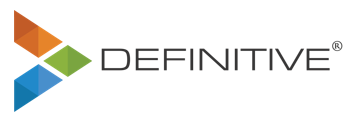Organizational Cost Savings Case Study

A Q&A with John Sammarco of Definitive Business Solutions, who discusses their successful engagement with Accenture LLP.
Q. Who was your customer and what was their role?
Our customer was the Chief Procurement Office within Accenture, a global management consulting and professional services company that provides a broad range of strategy, consulting, digital, technology and operations services. Incorporated in Dublin, Ireland in 2009, Accenture is a Fortune Global 500 company. It reported net revenues of ~$35 billion in 2017 and has more than 425,000 employees.
Q. What was Definitive’s role with Accenture?
Definitive was hired to support the preparation, facilitation, and summarization of two world-wide transformation workshops in Chicago, IL. Specifically, Definitive assisted the team in prioritizing organizational design principles, operating models, and technology solutions. We prepared Analytic Hierarchy Process (AHP) decision support models, facilitated group decision-making sessions, and summarized meeting outcomes by providing various analytical reports.
Q. What was Accenture trying to achieve and what challenges were they facing?
Accenture set a goal to increase “spend under management” and deliver $100-$140M in incremental cost savings to the company. To accomplish this, they needed to fundamentally change its historically decentralized approach to spend management and align responsibility and spend under the Chief Procurement Office. This included: creating a new procurement governance structure to hold senior executives accountable for delivering the procurement strategy and incremental savings; requiring all purchases be made from preferred supplier contracts; using global standard processes and tools for all procurement activities; and creating and operating a category management focused model.
This change represented a significant departure from their legacy of each operating group and procurement organization being fully autonomous and controlling their own spend.
Q. What did the Analytic Hierarchy Process involve and why it was important?
To Accenture’s credit, the representatives came prepared to meet the goal even though it meant losing some procurement autonomy for many of the organizational units. They began by performing a SWOT analysis, identifying the strengths (i.e., things that were working well and should be continued); the weaknesses (i.e., the issues or gaps, or things that needed to be fixed); the opportunities to improve (i.e., things they should start); and the threats to their success (i.e., risks they should mitigate).
After the collective inputs from the team had been consolidated and mapped to a dozen or so pre-established organizational design principles, Definitive facilitated a group session where the relative importance of the design principles was established using the Analytic Hierarchy Process (AHP) and pairwise comparisons. We then evaluated alternative operating models to determine which one was best aligned to the weighted principles.
In the second workshop, Definitive facilitated the development of another AHP decision model to evaluate technology solutions to maximize spend under management. With that model, we facilitated a group prioritization session to weight the evaluation criteria, and then evaluated and prioritized the solutions.
The AHP decision models enabled a group of diverse representatives from around the world to efficiently evaluate and select a new operating model and prioritize technology solutions. The use of the models led to consensus decisions that enjoyed the confidence of the team and the Chief Procurement Officer.
Q. How did Definitive add value to Accenture’s procurement transformation?
Definitive helped Accenture select a new operating model and technology solutions that would transform the management of its $5B in procurement spend. Our methodology promoted collaboration, trust, and teamwork. It also provided a sound basis for making complex group decisions, resulting in consensus from those who were most affected by the change and essential to a successful transformation.
By helping our customer achieve their goal of increasing spend under management and delivering $100-$140M in cost savings, they were positioned to make an impact to their bottom-line equivalent to growing revenue by ~$1B.
